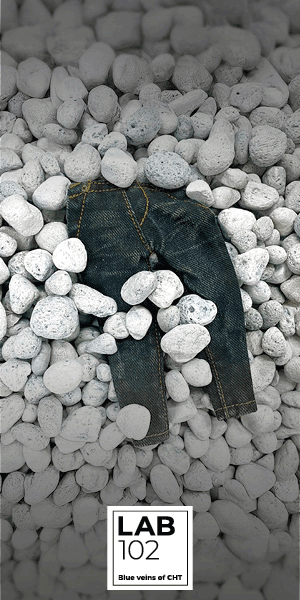The Holy Grail of denim fabrics

When it comes to Japanese denim fabric manufacturing, there are only a handful of really great places in the land of the Rising Sun to visit. Kuroki is definitely one of them. Let Tilmann Wrobel take you on a guided tour…
When visiting Japan and particularly the Bichu Bingo area, I always recommend a visit to the Kuroki denim mill. I’ve had the chance to go there twice, and I can tell you it has the ‘wow factor’ for every denimhead.
The Bichu (or Bitchu) Bingo area is located close to Kojima Bay, which you might know for its famous denim brands such as Momotaro, Japan Blue, Kapital and Big John. The area was originally a wetland, and the then-Emperor requested that cotton was planted to drain the swamps. It became famous for its quality cotton and its textile industry, and this industry, and subsequently denim, is a reference point around the world.
In Bichu Bingo we find the city of Ibara, where Kuroki Mill is located. It was founded in the 1950s by Tamotsu Kuroki, and when the first Levi’s jeans were manufactured in Japan, the company started dyeing and weaving denim. By the early 1960s, Japanese denim had begun to grow in popularity around the world.
To ensure that the indigo dyeing quality was as good, if not better, then the original American denim fabrications, Kuroki began indigo rope-dyeing around 1965. It quickly became known for its deep and rich indigo rope-dyed denim fabrics, and focused exclusively on these from the 1970s.
Warm welcome
Arriving at Kuroki in Ibara’s outskirts, I received a warm welcome from Tatsushi Kuroki, the current president. If you are a regular visitor of denim fairs, you will probably recognise him,with his light grey hair and smiling face. He travels the world, presenting his innovative and heritage fabrics, sharing his passion for the well-made blue wherever he can. But seeing him in front of his factory, and having a personal guided tour, is a wonderful experience that I’ll never forget.
It goes without saying that water treatment is perfect at Kuroki, and that the entire dyeing plant is extremely tidy and clean. Fabric dyeing and fabric weaving are set up in two different factories, so one of the first things you notice in the dyeing section is the huge space given to the rope preparation and rope dyeing. It is the heart of the company. The rope-dyeing machine has a few “secret tricks”, that I’m afraid Mr Kuroki would not want shared here!
In the weaving plant, which is located a few kilometres away, Tatsushi Kuroki welcomed me into his office with a hot tea and a seat on his comfy vintage sofas. In the main weaving halls, I saw an impressive number of rare and collectible Toyoda vintage weaving machines. These wooden shuttle looms are alongside groups of more modern and faster selvedge looms. It’s from these looms that some of the world’s best premium and heritage brands get their fabrications.
There are different looms for a range of fabric weights, going from 6oz to 24oz. And, let me tell you, the 24oz selvedge loom uses some impressively thick indigo warp-yarn, which could almost be called ‘cables’. It’s fantastic to hear the humming of the vintage looms. Even the modern ones transmit the sound of quality.
Couture clients
Kuroki could simply focus on this exceptional know-how in heritage denim fabrics, but to stay ahead in fabric innovation, it also offers a wide variety of trend-driven fabric, blending metallics, colours and bi-stretch fabrications, for clients including luxury couture houses. There is also a hidden section in the weaving department, where the famous jacquard machines are set up. This is the place where, for example, the LV monogram denim fabric comes from, and Kuroki is constantly working on new versions of this jacquard denim, on new jacquard techniques and novelty selvedge borders.
So much to see, so much to discover. And if you can’t get the keys to enter the factory for a glimpse, then stop off at the Kuroki showroom in Ibara, and go through the thousands of fantastic denim hangers and samples.
All this excitement makes you hungry, so Tatsushi Kuroki took me for a fantastic lunch. Not to a fancy expensive restaurant, but a really good, down-to-earth ramen take-away. Because this man was so eager to head back to his factory and create more exciting denim fabrics!













